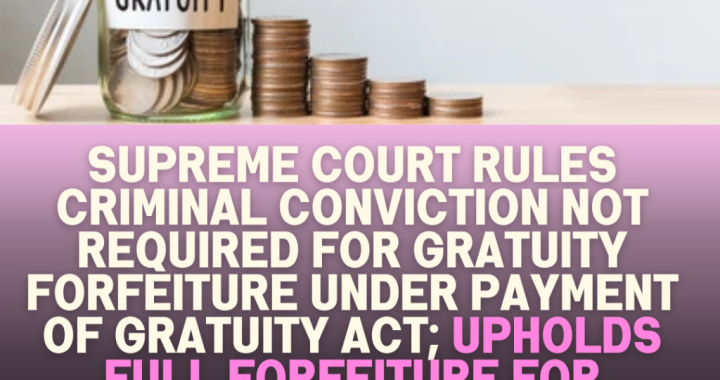When Values assigned to individual assets, sale is not Slump Sale Section 50B not attracted

When Individual Values assigned to Assets, It is not a slump sale
A sale is treated as slump sale only if no individual value is assigned to the assets.

Case Study
The Assessees were partners of a partnership firm which was dissolved with effect from December 06, 1987 and then sold as a going concern to “Association of Persons” AOP-3 on September 21, 1994. The assesees contended that the consideration received on sale of the dissolved partnership firm was a Slump Sale and hence capital receipt in their hands, not chargeable to income tax.
However, The Assessing Officer, while making the assessments, bifurcated this Assessment Year into two periods, one period from April 01, 1994 to November 20, 1994 (as AOP of the partners who had continued the business in that capacity in previous years) and second period from November 20, 1994 till March 31, 1995 (as the business was handed over to AOP-3 and the assessment was treated as that of AOP-3). While doing so, the entire capital gains on the sale as a going concern of the business of the firm as well as the proportionate profits for the period April 01, 1994 to November 20, 1994, when the controlling AOP was carrying on business as computed in accordance with the order of the High Court in Company Petition No. 1 of 1988, on a notional basis a sum of Rs 9,57,57,007 was included in the assessment of the AOP for the first period. The income and tax computations were made separately for the two periods in the order of assessment. The Assessing Officer apportioned the consideration among the various assets comprised within the business with further splitting between short term and long term capital gains.
The total proceeds of Rs. 92 crores are first apportioned among the assessees in the ratio in which they had received the said amount. Thereafter, this amount is divided into long term capital gains and short term capital gains. Long term capital gains were on goodwill and sale of land & short term capital gain is arrived at in respect of transfer of movables which were depreciable assets. For the purposes of calculation, figures were taken from Table II incorporated in the Assessment Order itself mentioning the market value of these assets.
The market value of the assets of the firm, viz. land, building and plant & machinery was Rs.21,52,90,000. Since total sale consideration at which the firm was sold was Rs 92 crores, balance amount of Rs.70,47,10,000 was treated as representing goodwill of the firm which was taxed as long term gain. This mode of arriving at short term and long term capital gain and taxing it accordingly by the Assessing Officer has received the stamp of approval by the Commissioner of Income Tax (Appeals) and the Income Tax Appellate Tribunal, as well as the High Court.
The assessees, however, were attempting to save the capital gain tax on the ground that it was a “slump sale” within the meaning of Section 2(42C) of the Act and there was no mechanism at that time as to how the capital gain is to be computed in such circumstances, which was provided for the first time by Section 50B of the Act with effect from April 01, 2000.
The Assesees then appealed to the Supreme Court in which it was held that:
- The Revenue has already noticed that the firm was dissolved on December 06, 1987 by afflux of time. This event happened as per the terms stipulated in the partnership deed itself. The income that was generated from the business, after the dissolution, was assessed by the income tax authorities in the hands of erstwhile partners as an AOP. It is this AOP which was filing the returns and getting the same assessed in that capacity and paying the income tax thereupon. Further, in the orders passed by the High Court from time to time in the said petition, in so far as the firm is concerned, it has always been described as ‘the dissolved partnership firm’. Thus, the assets which were sold ultimately on November 20, 1994 were of a dissolved partnership firm, though as a going concern.
- The High Court had passed various orders which included an order for valuation of the assets of the firm. This valuation was done to enable the Court to fix the reserve price for the purpose of inter se bidding between the erstwhile partners and/or association of erstwhile partners. The assets were valued at Rs 30 crores and were sold for Rs 92 crores. After deducting the liabilities of the nine partners, the balance amount was paid to them.
- It becomes clear that asset of the firm that was sold was the capital asset within the meaning of Section 2(14) of the Act. It is not even disputed. Once it is held to be the “capital asset”, gain therefrom is to be treated as capital gain within the meaning of Section 45 of the Act;
- A sale is treated as slump sale only if no individual value is assigned to the assets. However, in this case, not only value was assigned to individual assets, even the liabilities were taken care of when the amount of sale was apportioned among the outgoing partners, i.e. the assessees herein. Hence, this sale was not slump sale & obviously Section 50B also does not get attracted as this section contains special provision for computation of capital gains in case of slump sale.
- In Para 45 of the judgment, the Court also stated that capital gains under Section 45 of the Act are not income accruing from day to day. It is deemed income which arises at a fixed point of time, viz. on the date of transfer. In this case, partnership firm was dissolved and thereafter winding up proceedings were taken up to sell the assets of the firm and distribute the share thereof to the erstwhile partners. Thus, the ‘transfer’ of the assets triggered the provisions of Section 45 of the Act and making the capital gain subject to the payment of tax under the Act.
- In view of the discussion, the arguments that valuation of goodwill was wrongly done may also not survive. In any case, we find that no such plea was taken by the assessees in the High Court or before the Tribunal or lower authorities.
Related read-The Income Tax Appellate Tribunal declares slump sale surplus as a capital gain


 ITAT Amritsar: No Section 269SS Violation for One-Time Cash Payment Before Sub-Registrar
ITAT Amritsar: No Section 269SS Violation for One-Time Cash Payment Before Sub-Registrar  Tax Officials Unleash Digital Dragnet: How New Raid Powers Redefine Privacy, Property Rights in India and likely to Fuel Corruption
Tax Officials Unleash Digital Dragnet: How New Raid Powers Redefine Privacy, Property Rights in India and likely to Fuel Corruption  Income Tax Department Rewards for Reporting Tax Evasion: A Comprehensive Guide
Income Tax Department Rewards for Reporting Tax Evasion: A Comprehensive Guide  Forfeiture of Gratuity by Employer- What are the Remedies for an employee- Can employer be challenged?
Forfeiture of Gratuity by Employer- What are the Remedies for an employee- Can employer be challenged?  Employer can forfeit gratuity of an employee in case of moral turpitude
Employer can forfeit gratuity of an employee in case of moral turpitude  Diving Deeper: The Impact of the New Tax Bill on Dairy and Farming Income
Diving Deeper: The Impact of the New Tax Bill on Dairy and Farming Income